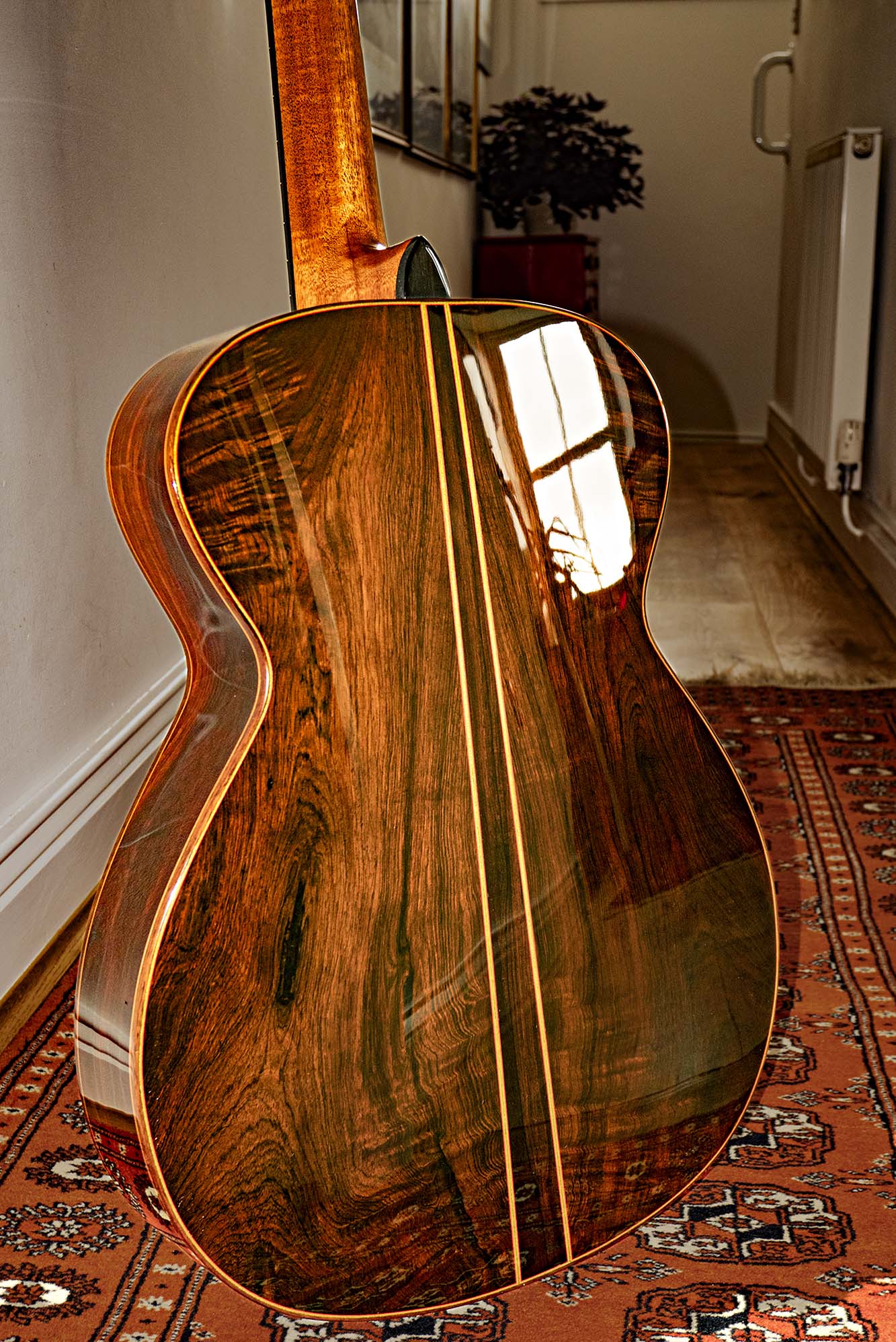.
It’s almost exactly 34 years since Dave Wilson started finishing my guitars. He started at Overwater Guitars (whose spray-booth I shared) on the 4th January 1987 and was taught by Overwater finisher Jack Clark (who later made my mandolin, cittern and guitar cases).
Dave learnt fast; he’s a perfectionist, constantly assessing and working on finishing techniques. He has come to terms with all the many changes in lacquer over the years, including the big switch to 2007 compliant lacquer in (surprisingly) 2007 and adapted his techniques to get the best out of each. His is a combination of skill, experience and always taking the necessary time; I have never seen better finishes than those he is producing now.
Many years ago he set up on his own, finishing for UK (and some foreign) builders including many of the very best in the country. And his reputation for refinishing is outstanding, to the point where his regular customers rave about him.
In the 35 years working together, we’ve become firm friends. Dave’s a chatty man and we talk about cars, bikes, instruments, family, customers and just about anything going on in the world around us.
I have never even considered going elswhere for finishing. Dave is simply the best.
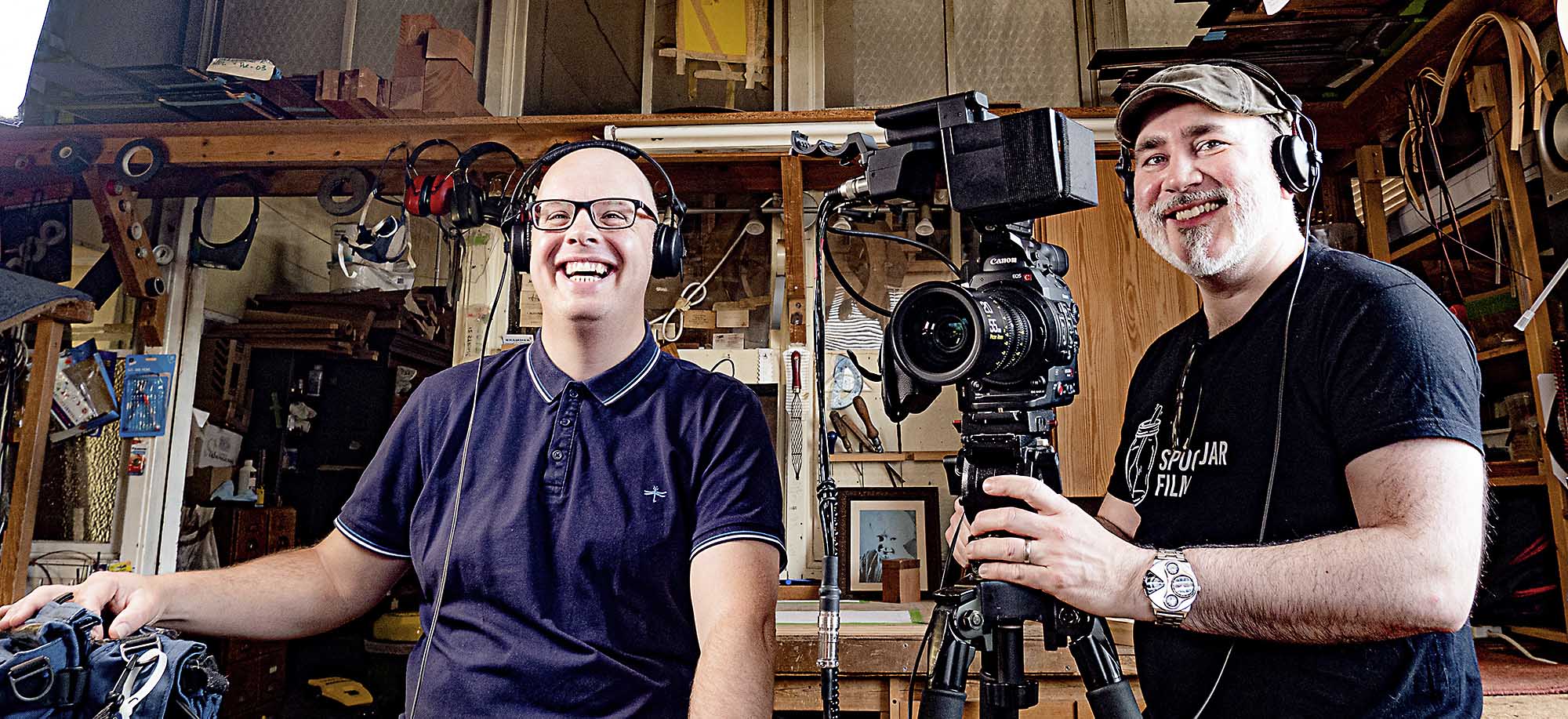

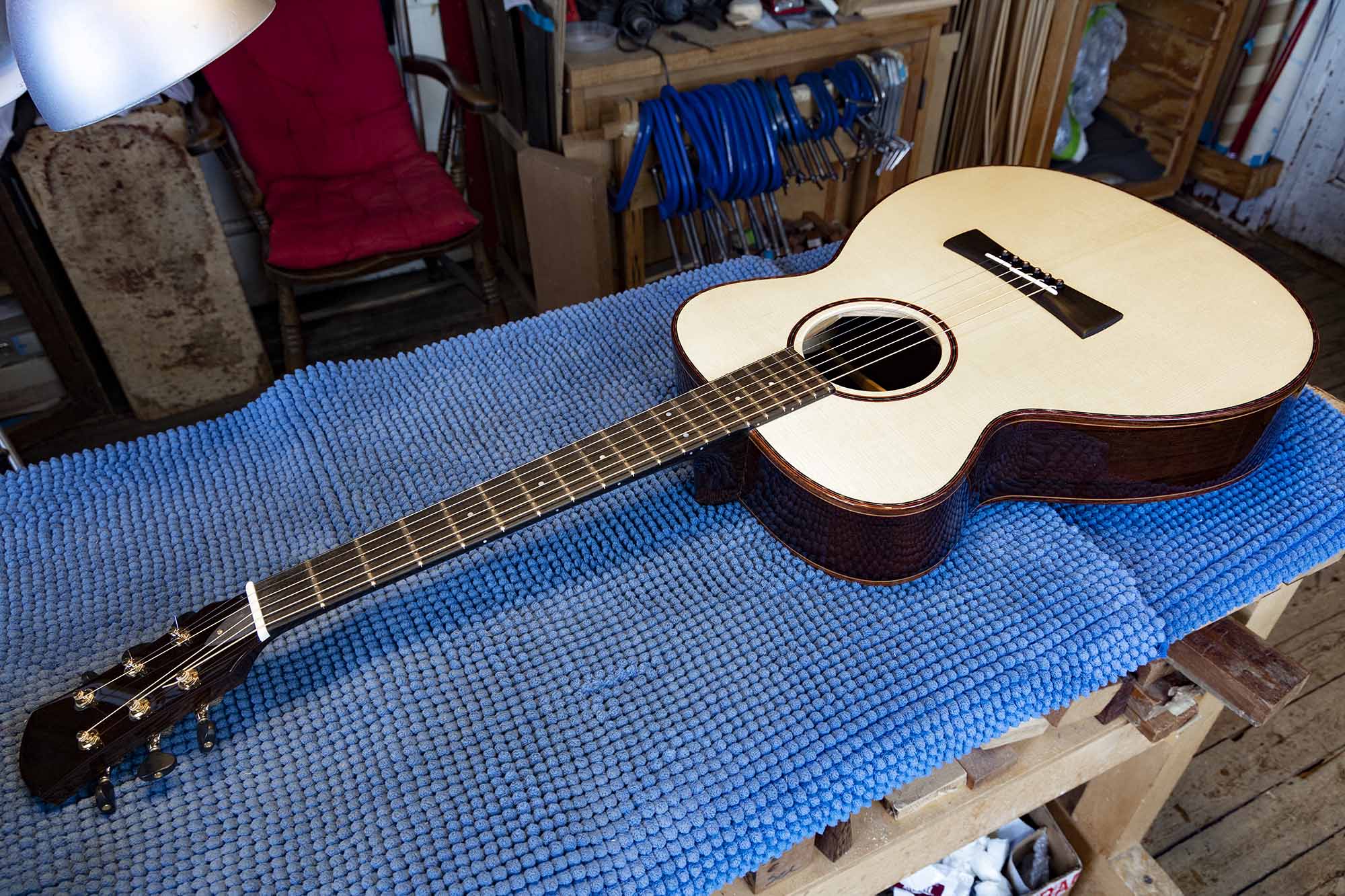
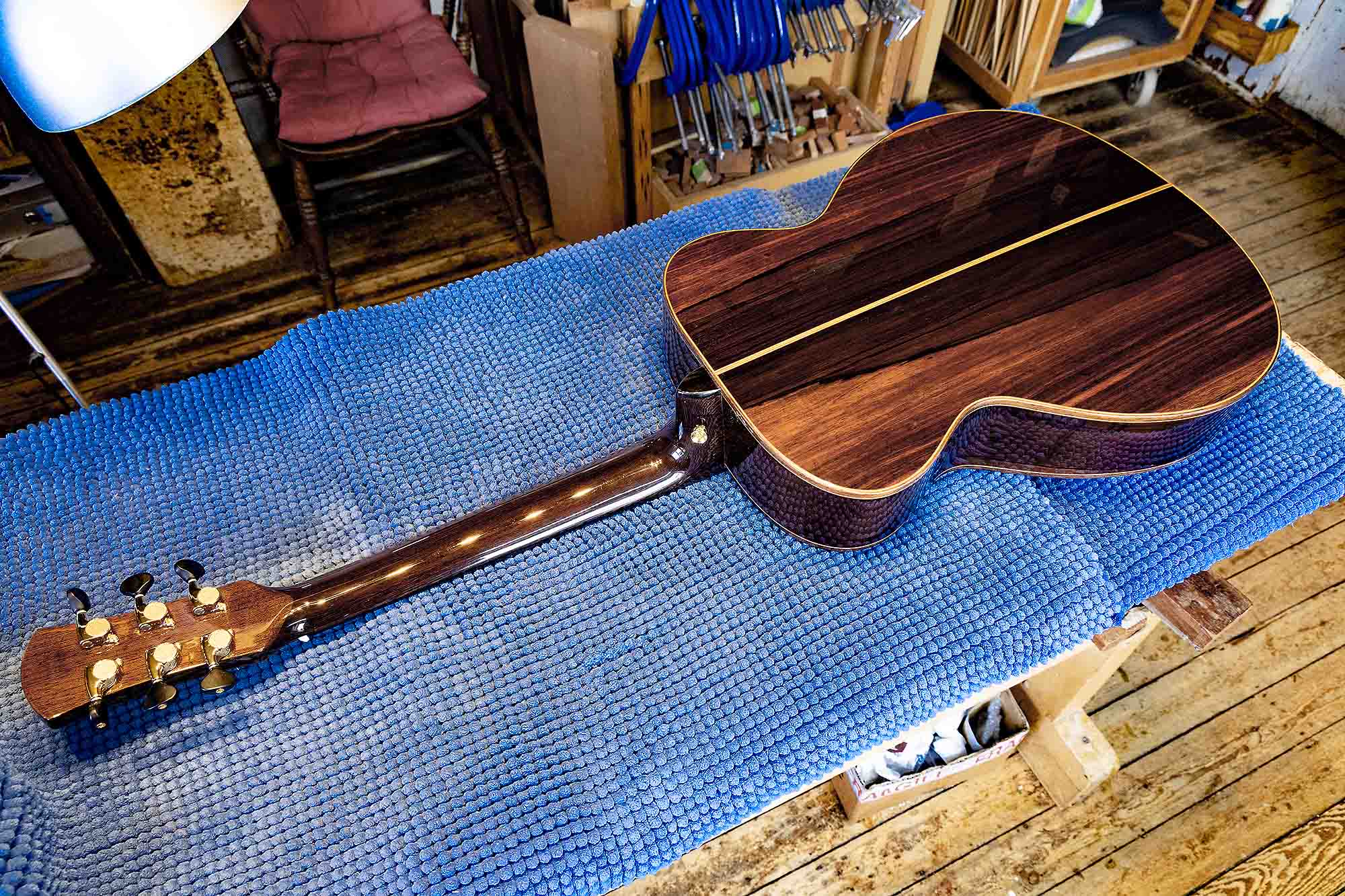
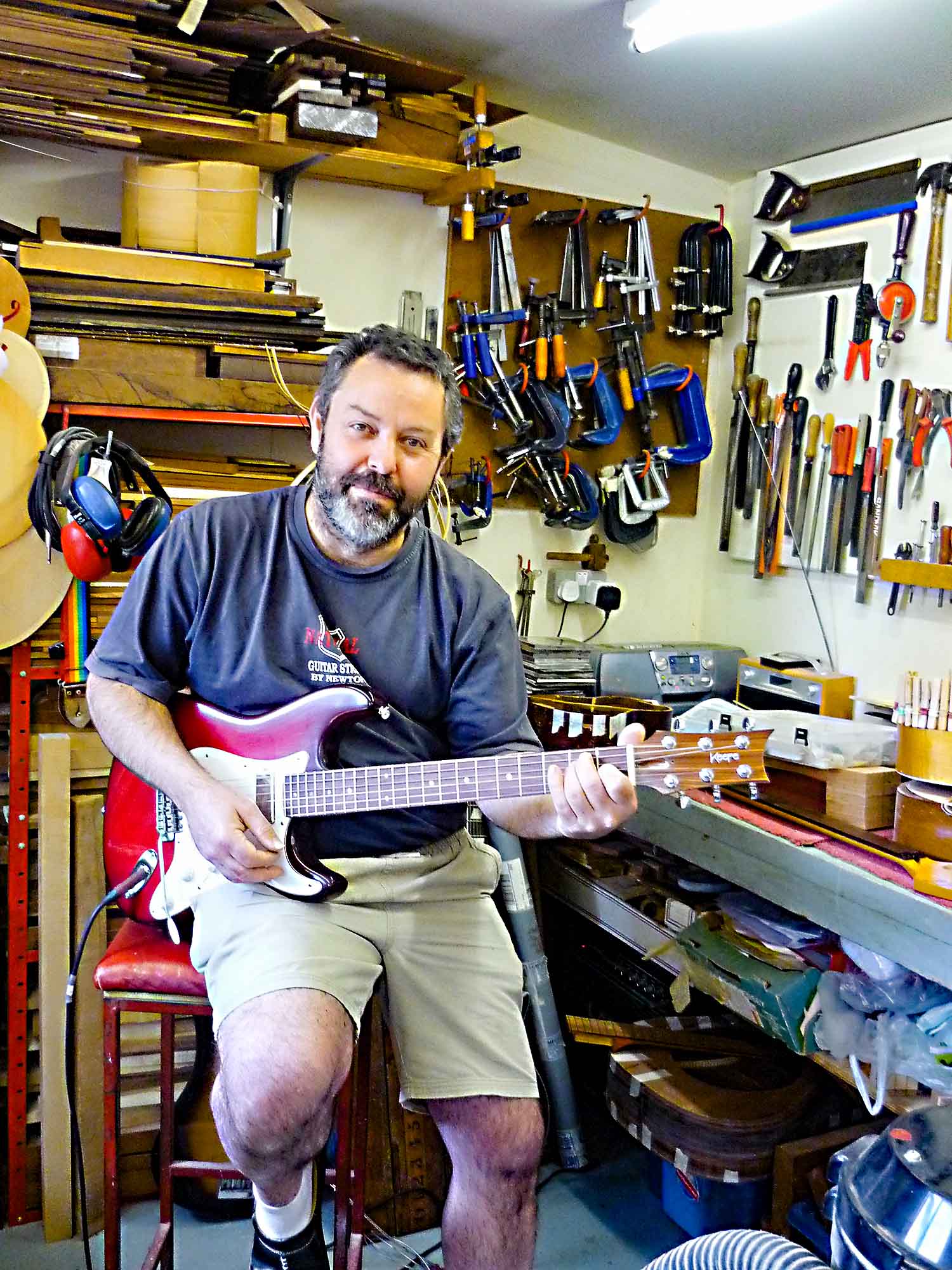 Colin proudly showing he can finger E major
Colin proudly showing he can finger E major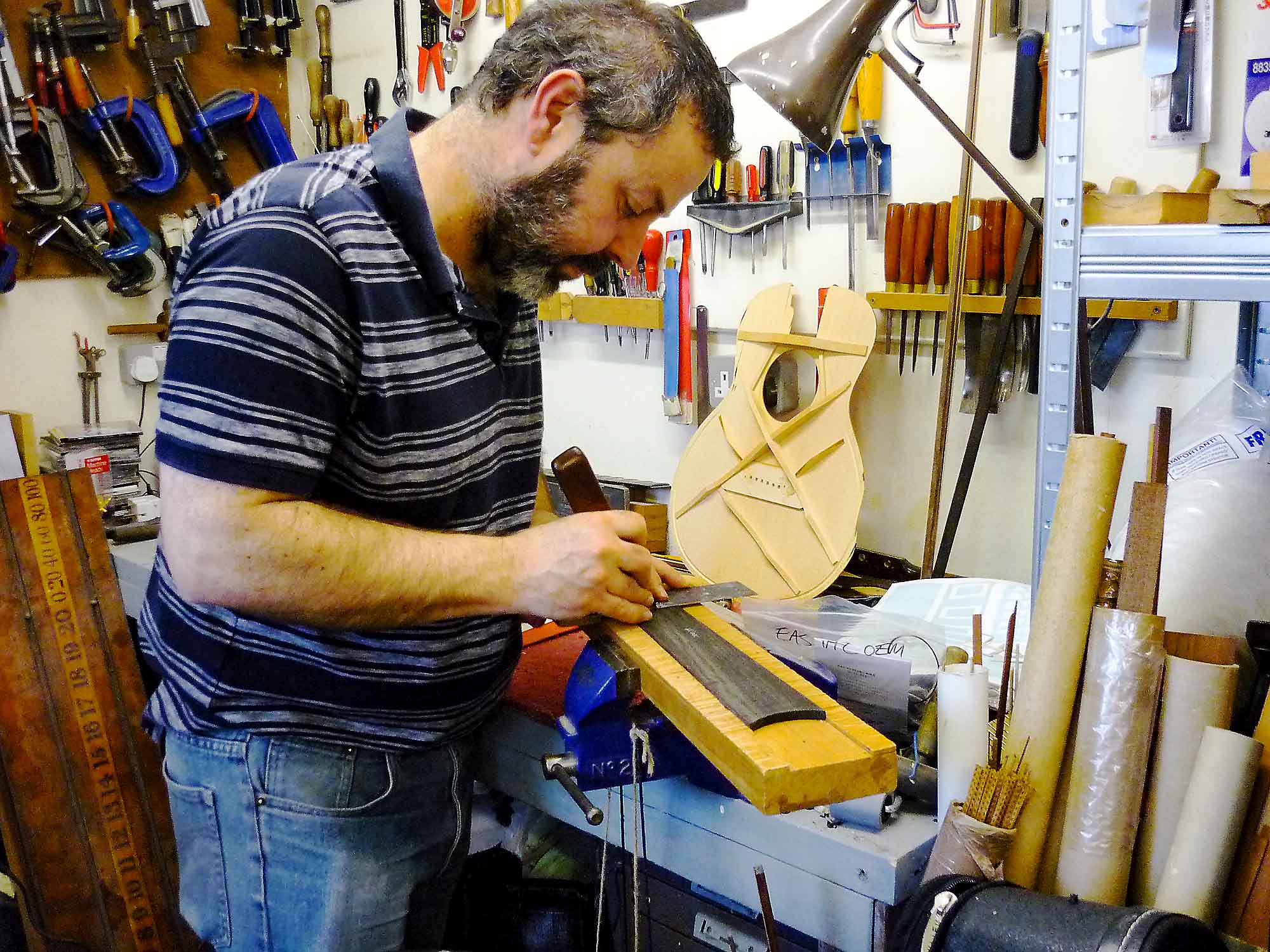 Colin marking out a fingerboard
Colin marking out a fingerboard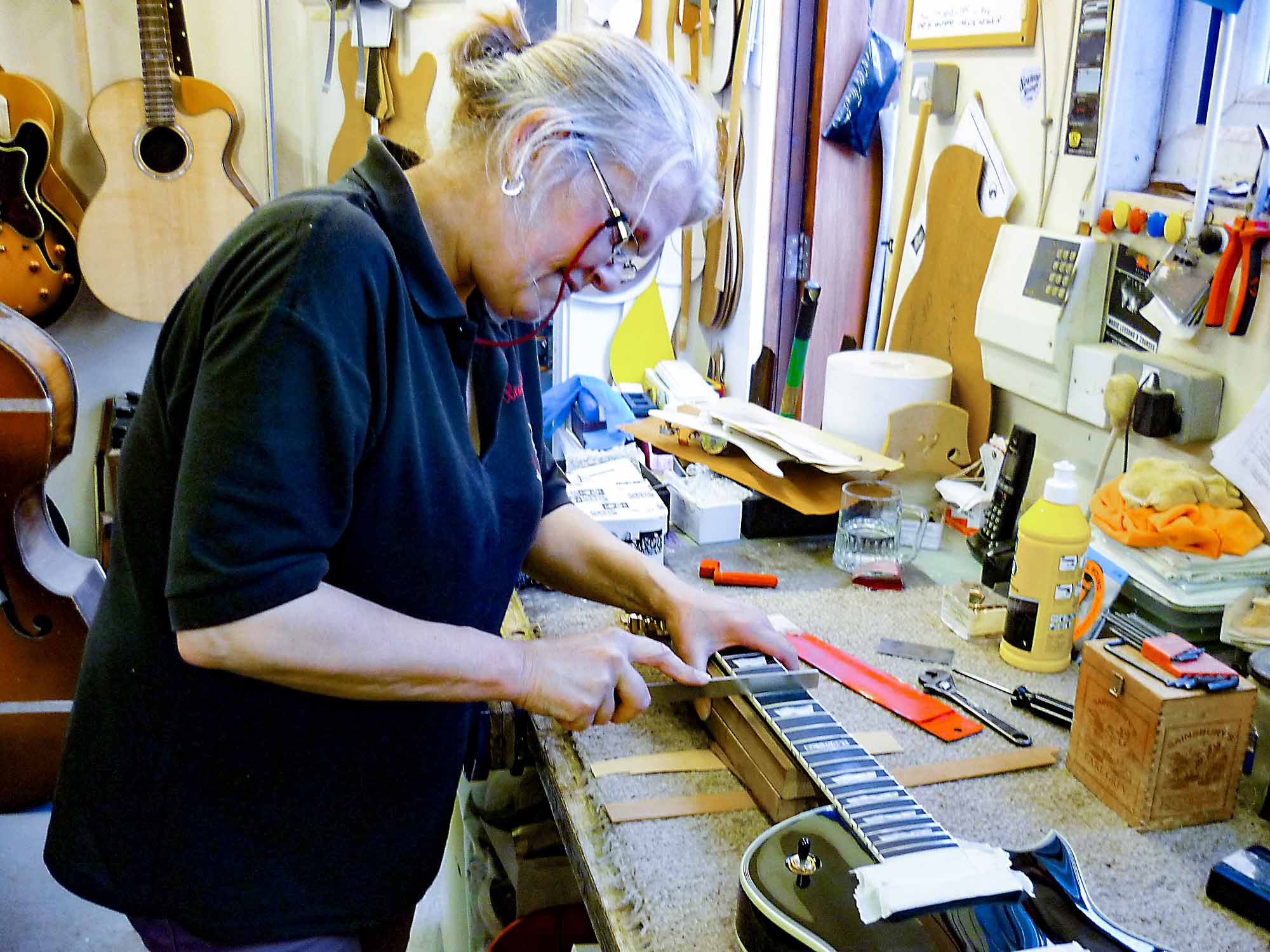 Janet profiling frets
Janet profiling frets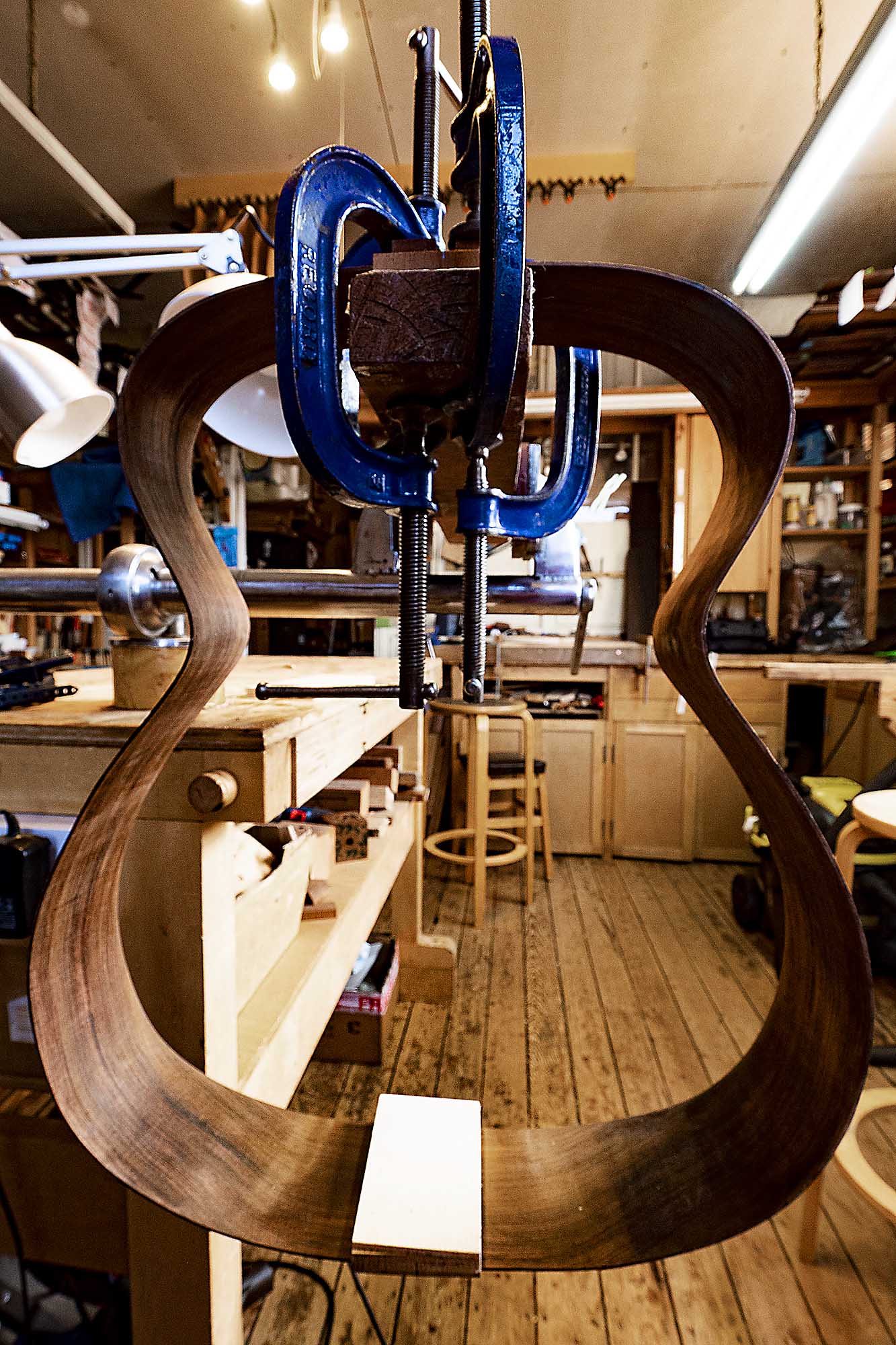
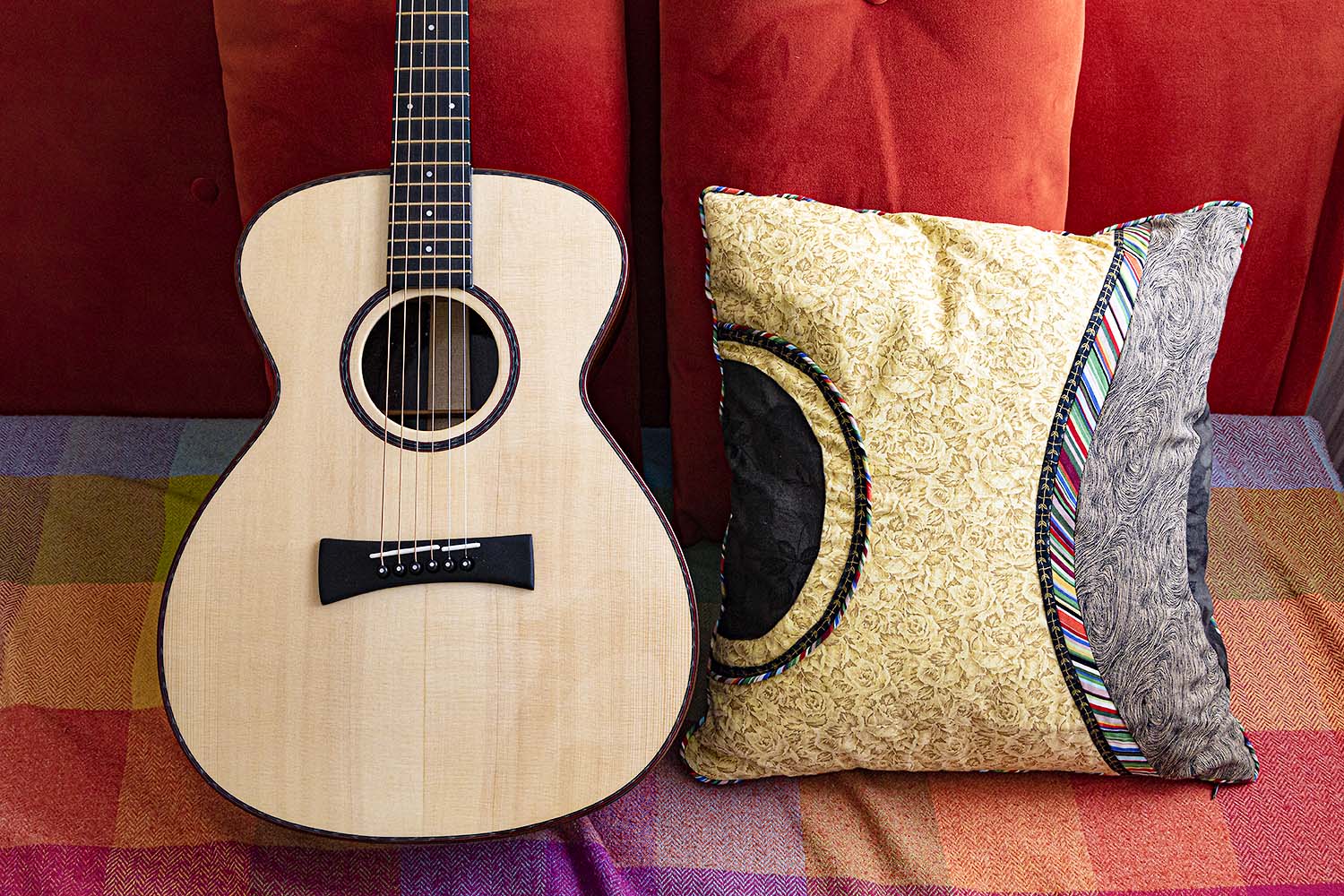
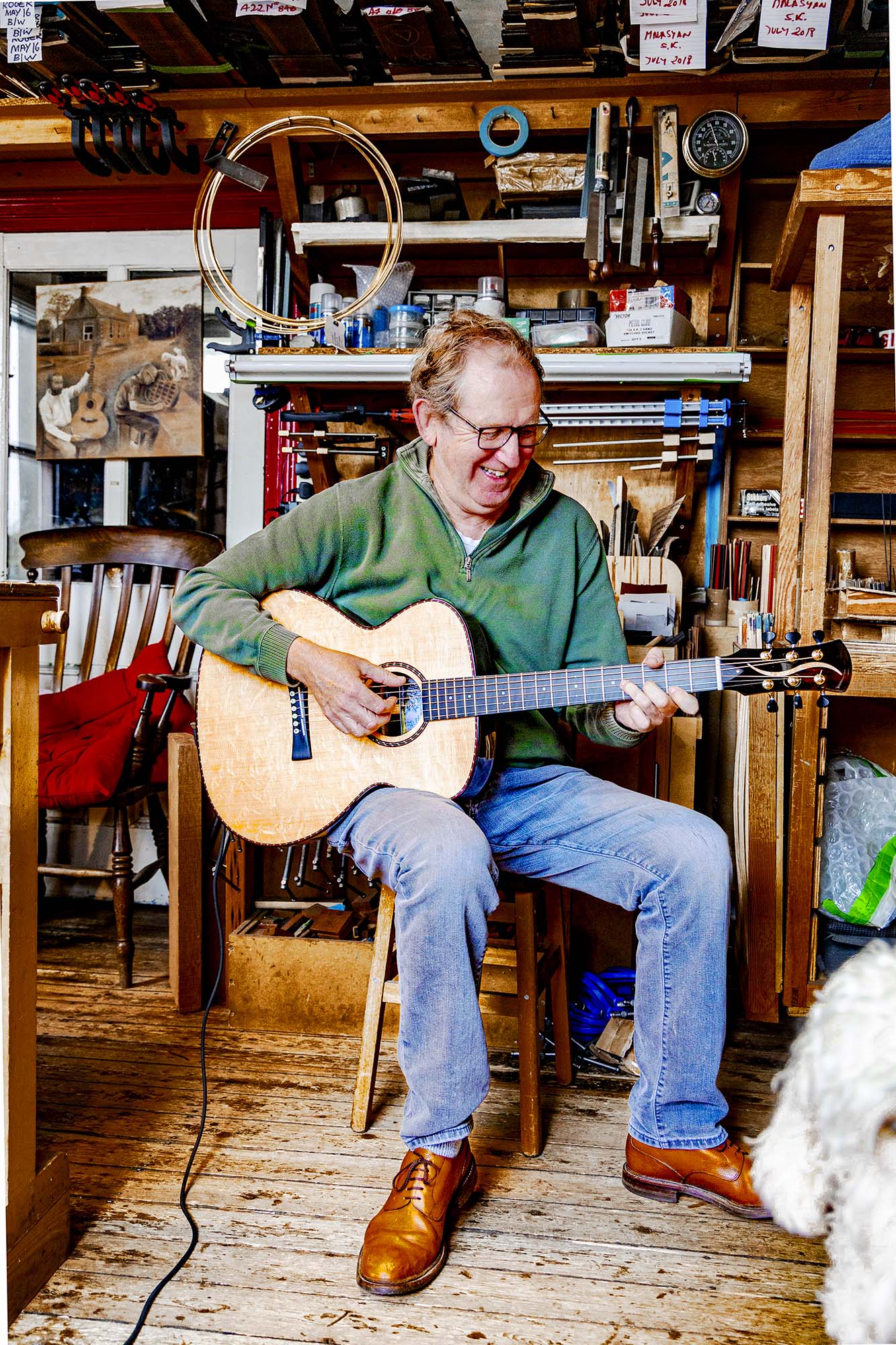
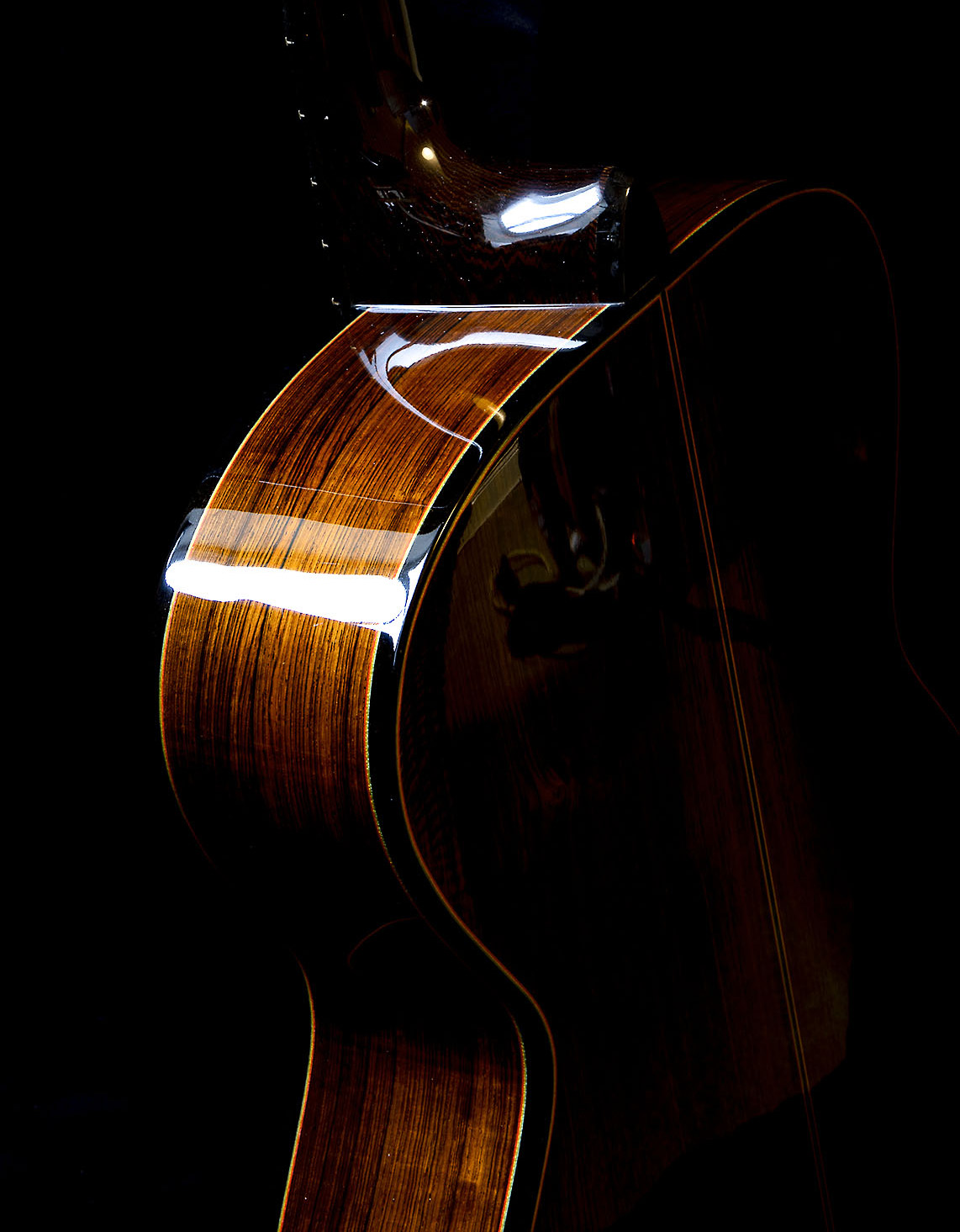
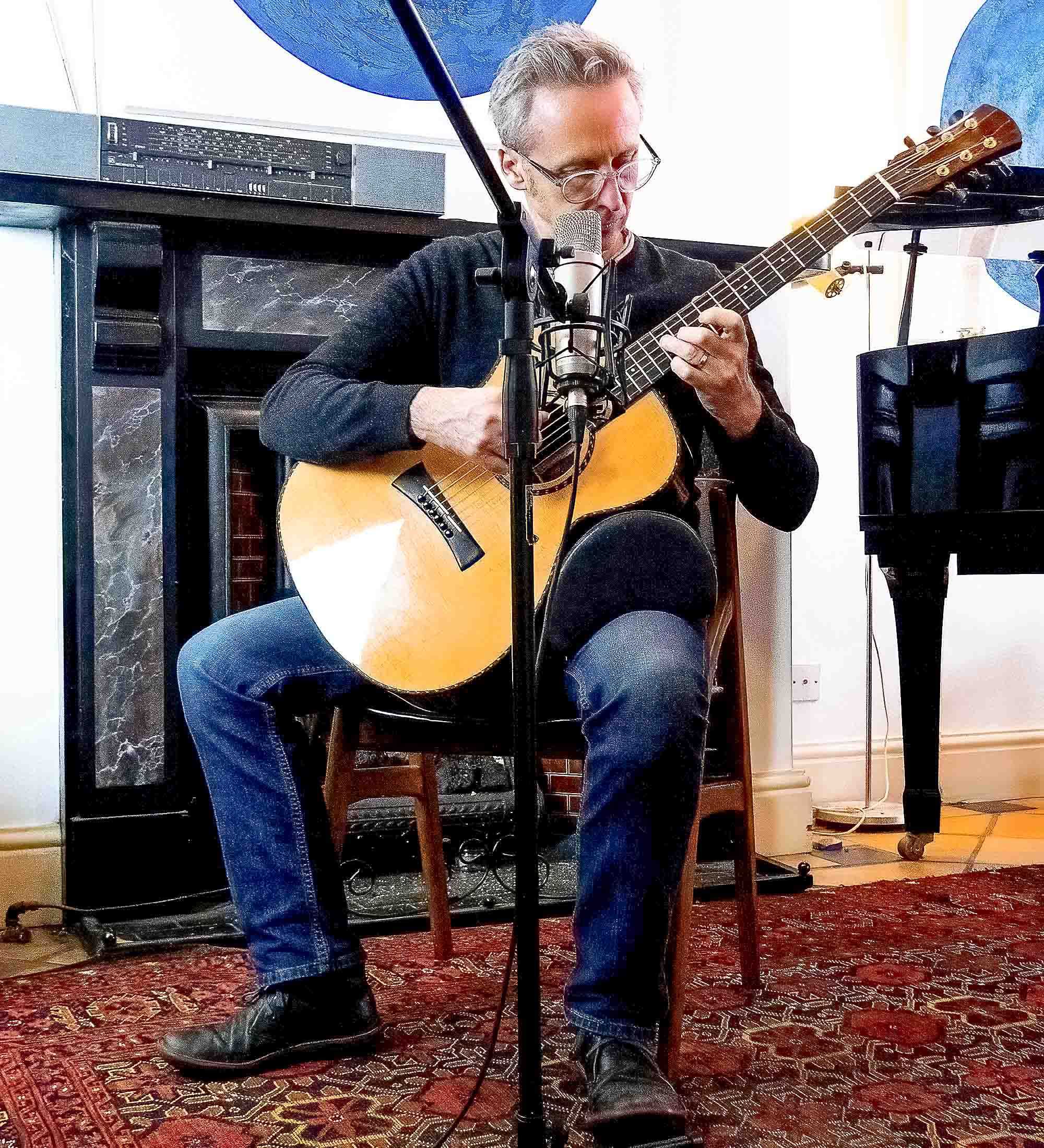 Jonny testing the recording setup
Jonny testing the recording setup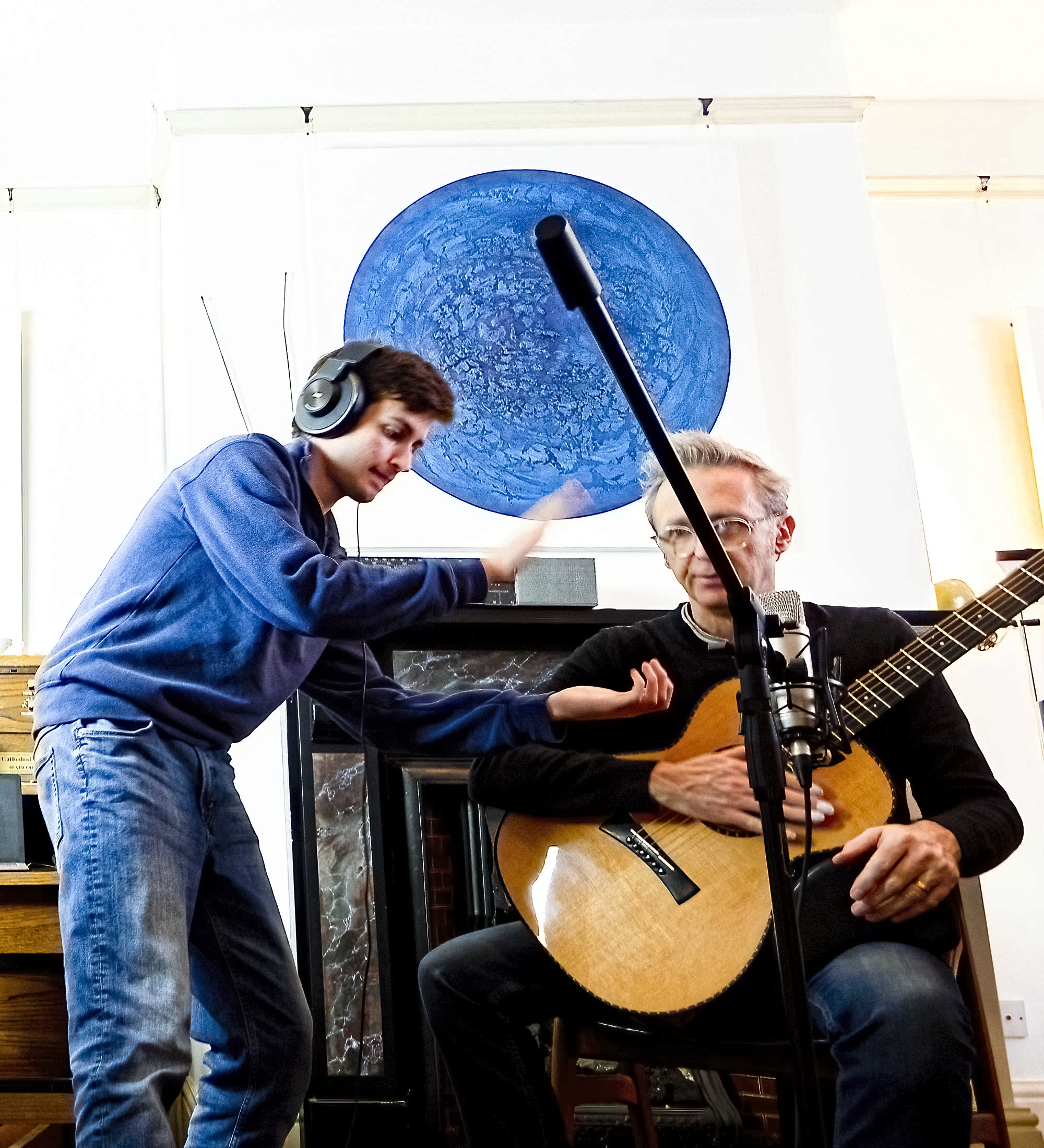 Louis and Jonny setting up to record Douglas Fir New World
Louis and Jonny setting up to record Douglas Fir New World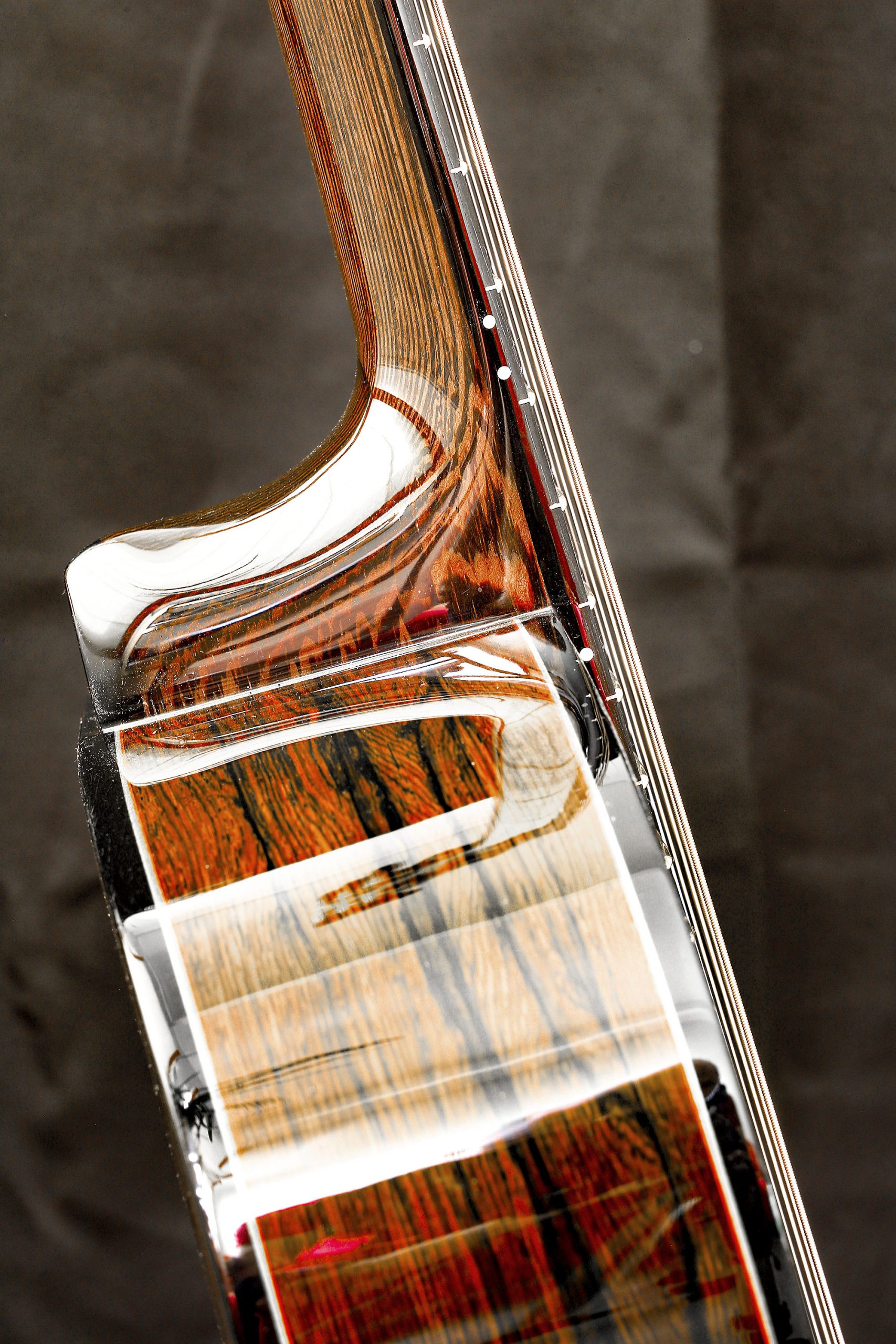
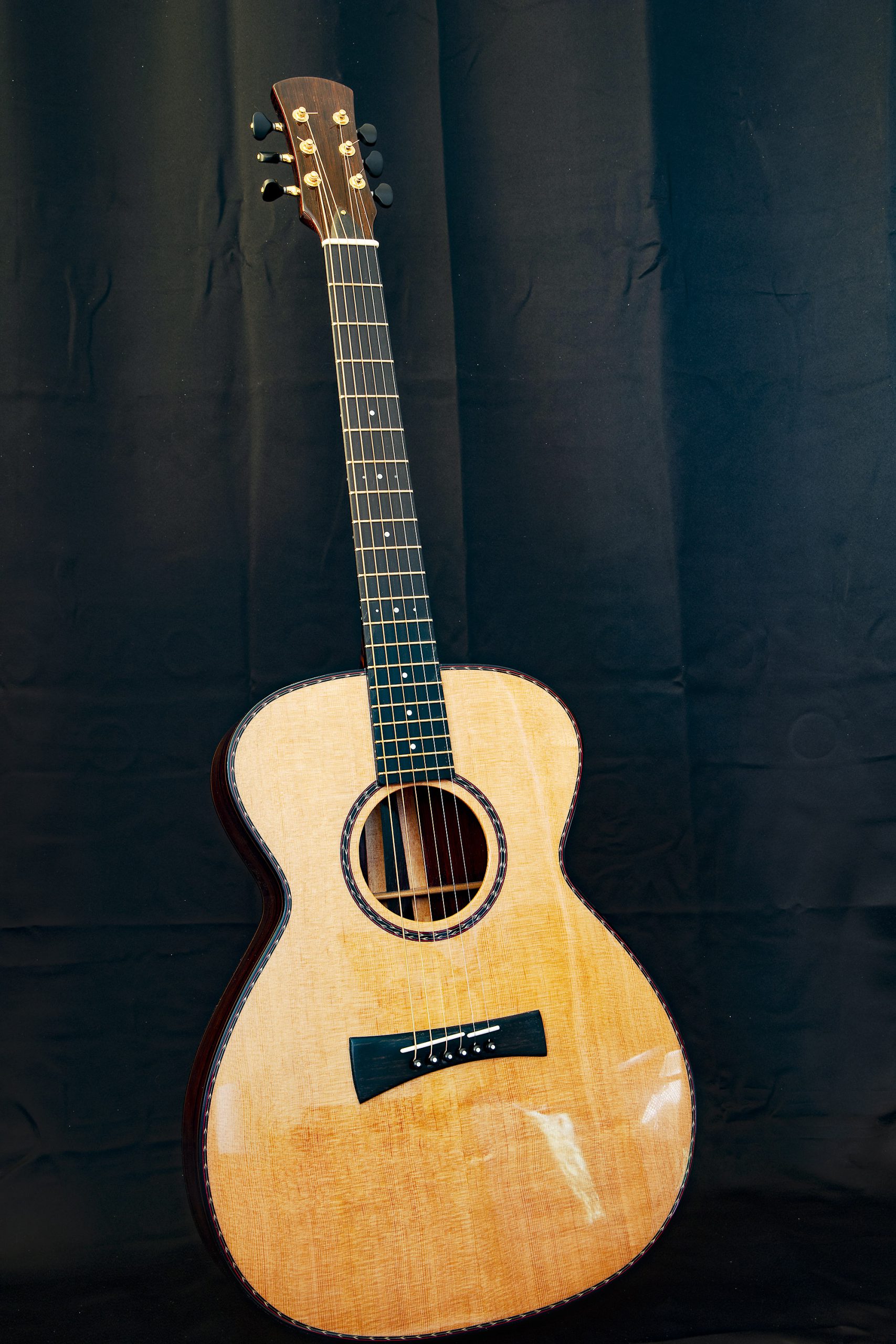
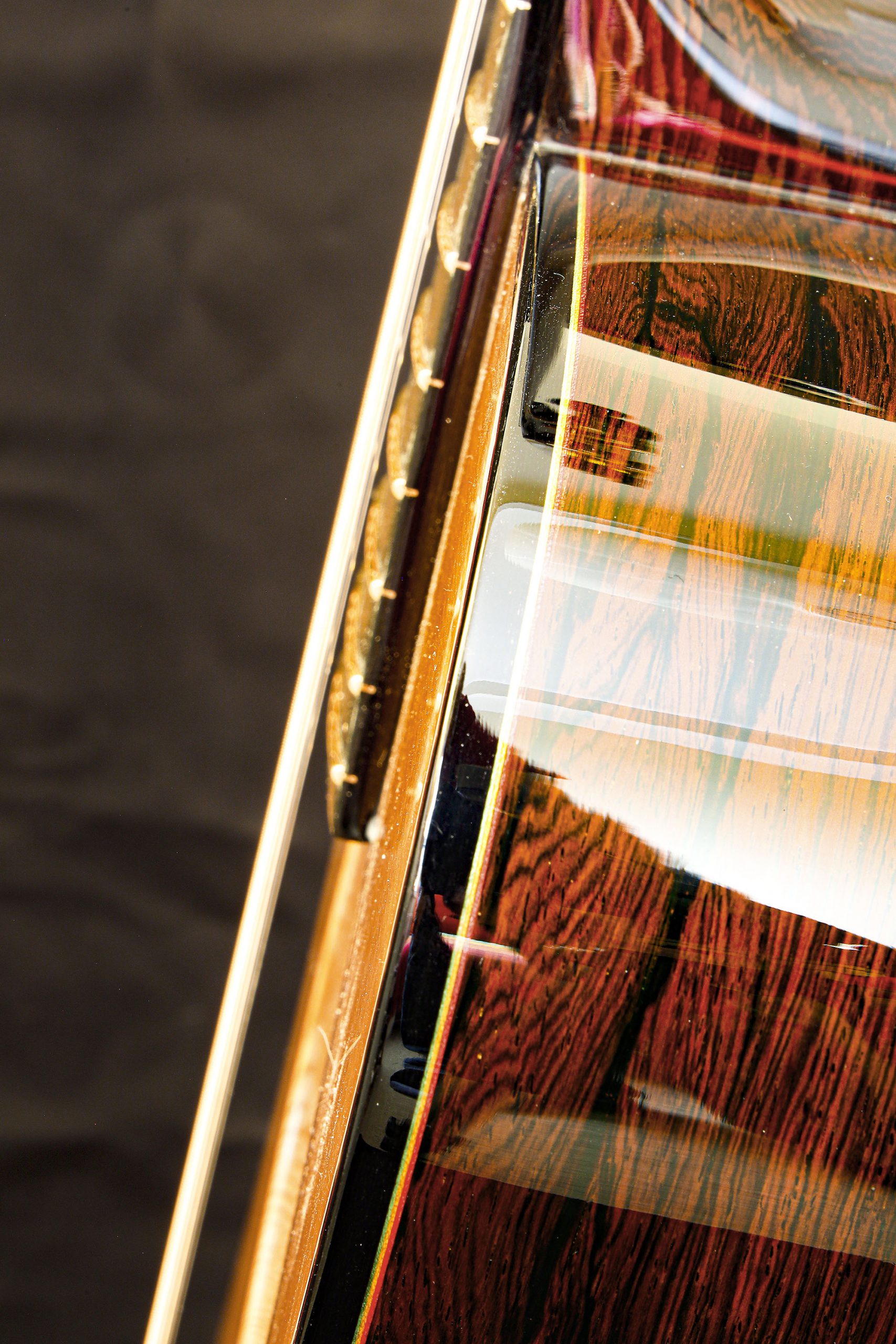
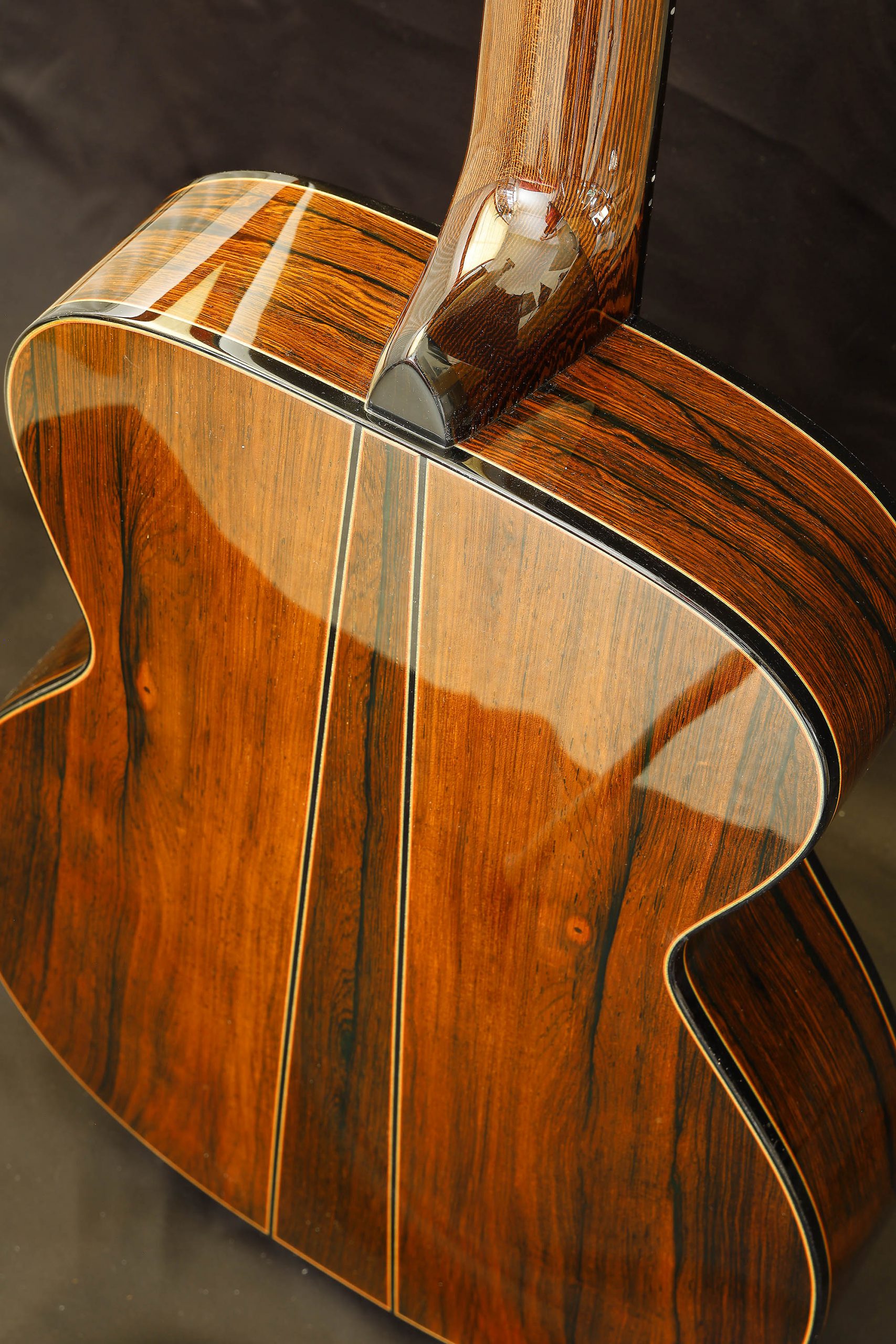
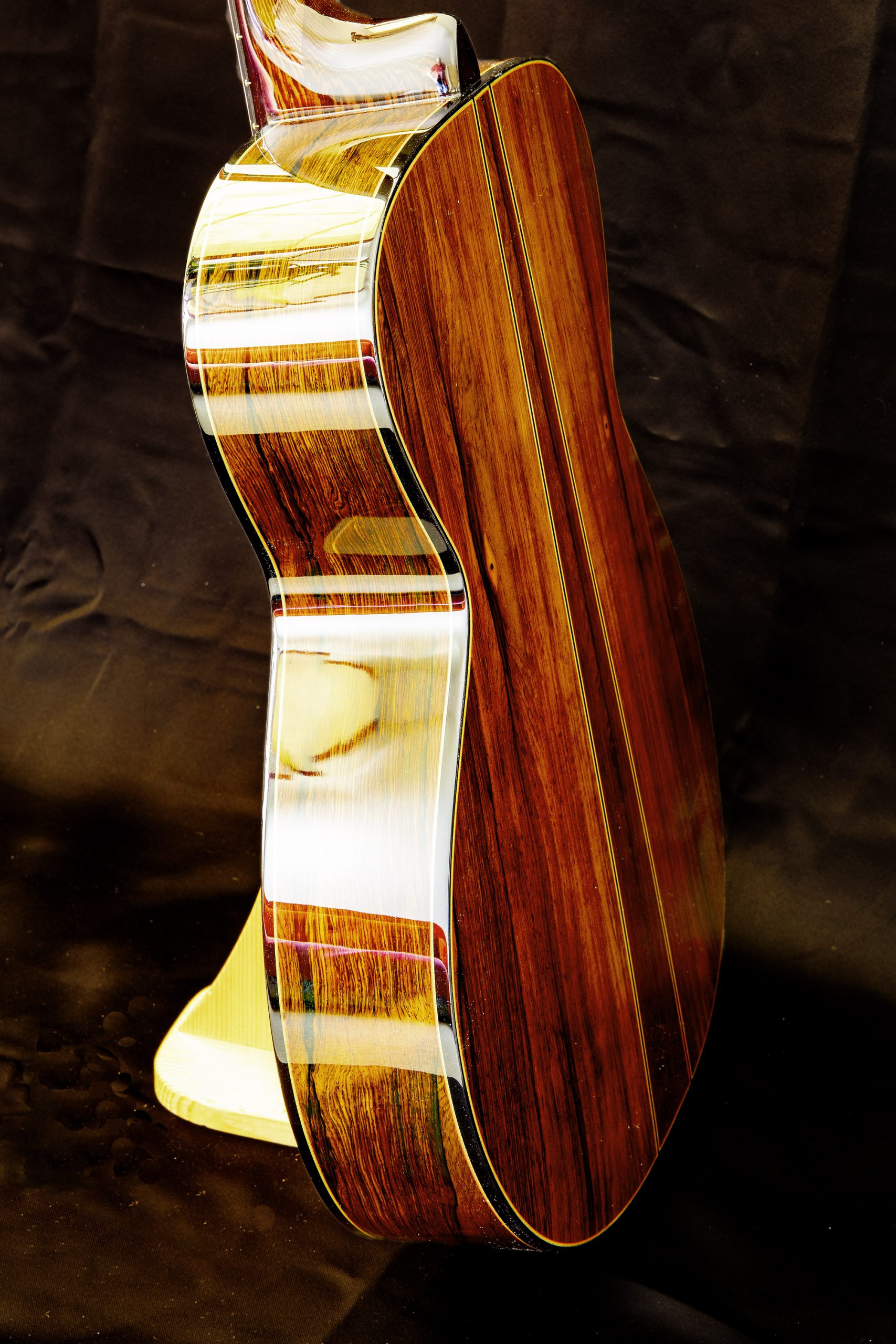
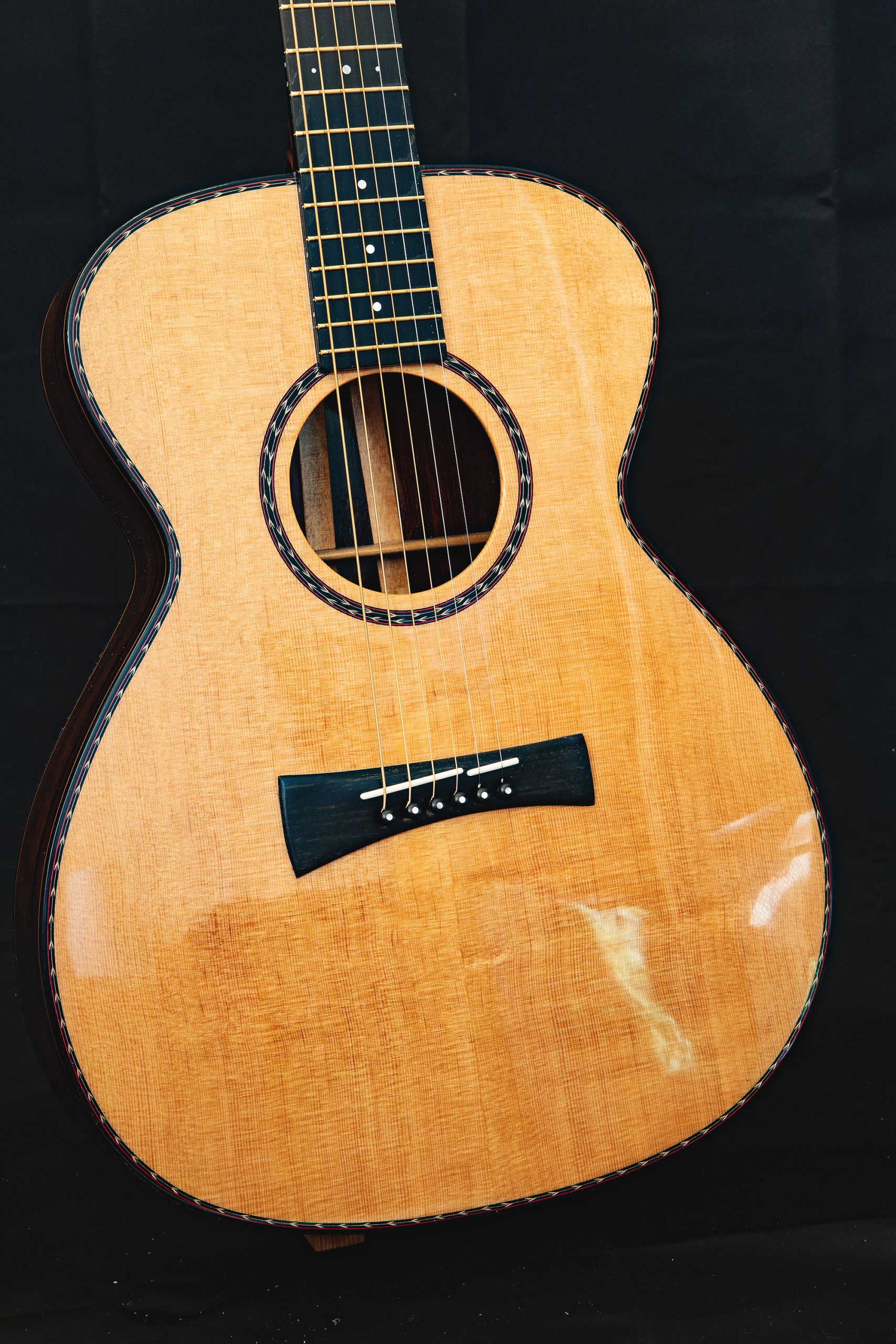
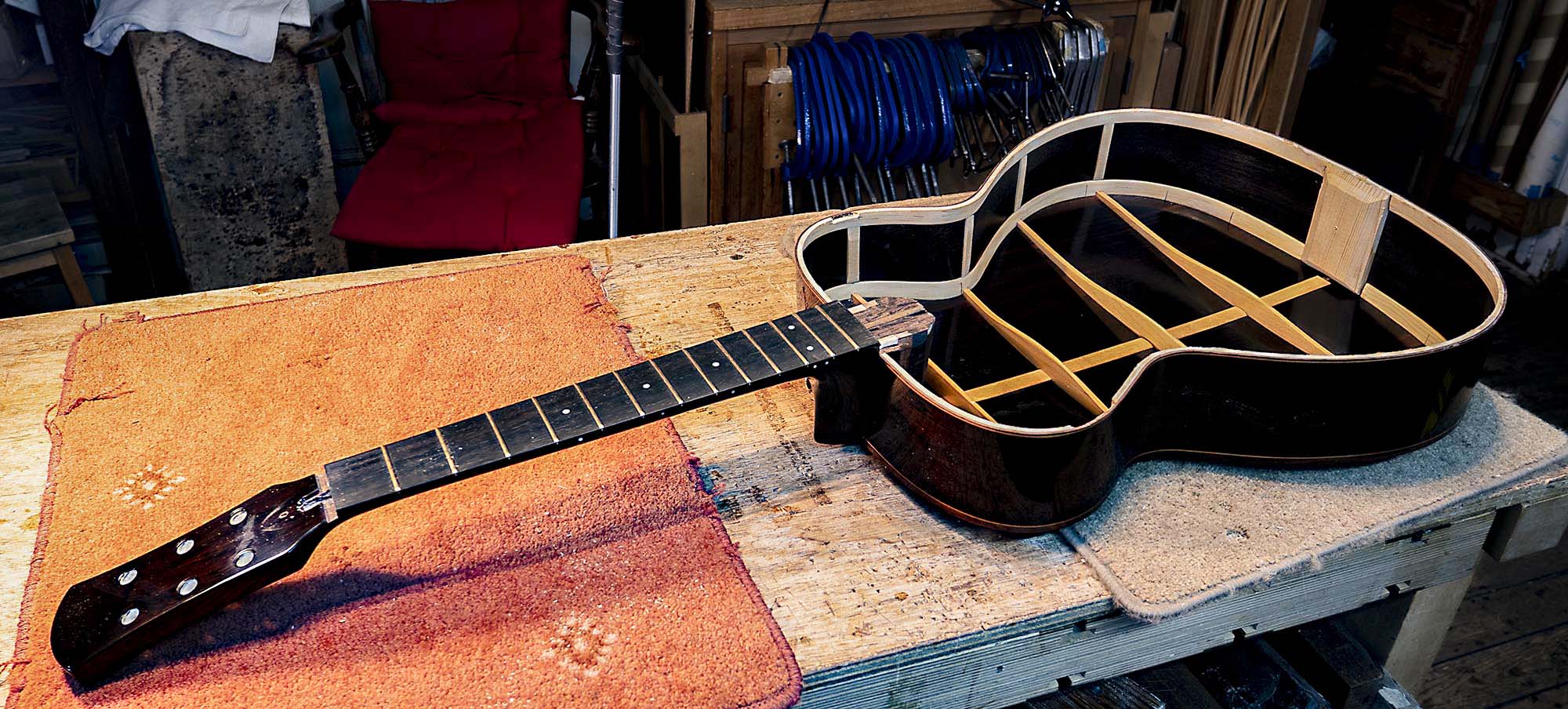 The old soundboard and dusty end of the fingerboard have been removed, leaving the top lining and the neck extension visible. The Wengé neck extension was reluctant to release the soundboard and suffered minor damage which will be sorted later. The body end of the truss rod is just visible.
The old soundboard and dusty end of the fingerboard have been removed, leaving the top lining and the neck extension visible. The Wengé neck extension was reluctant to release the soundboard and suffered minor damage which will be sorted later. The body end of the truss rod is just visible.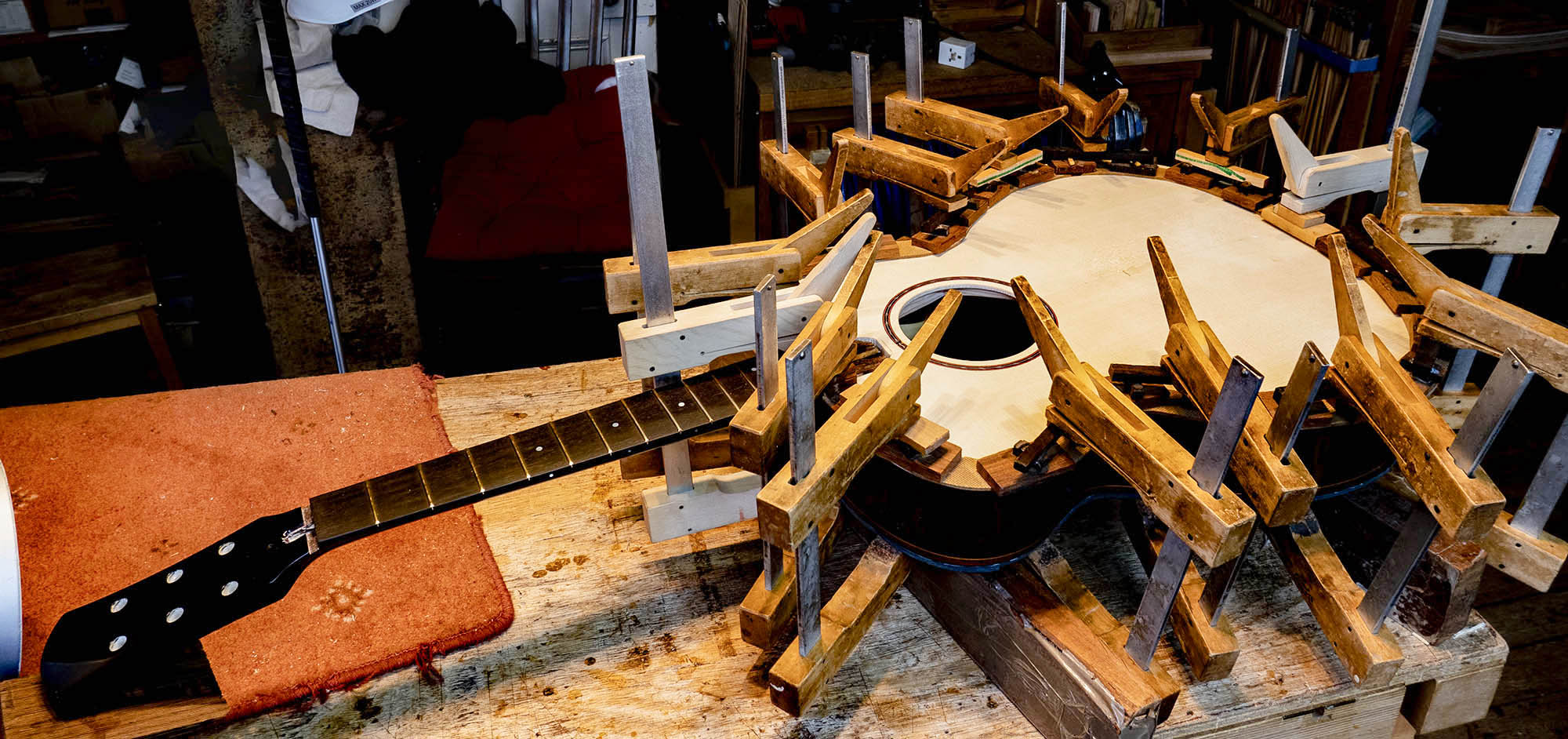 The soundboard clamped on while the glue dries – I love these wooden cam clamps.
The soundboard clamped on while the glue dries – I love these wooden cam clamps. The soundboard trimmed to body size. The area above the neck extension had been removed before fitting.
The soundboard trimmed to body size. The area above the neck extension had been removed before fitting.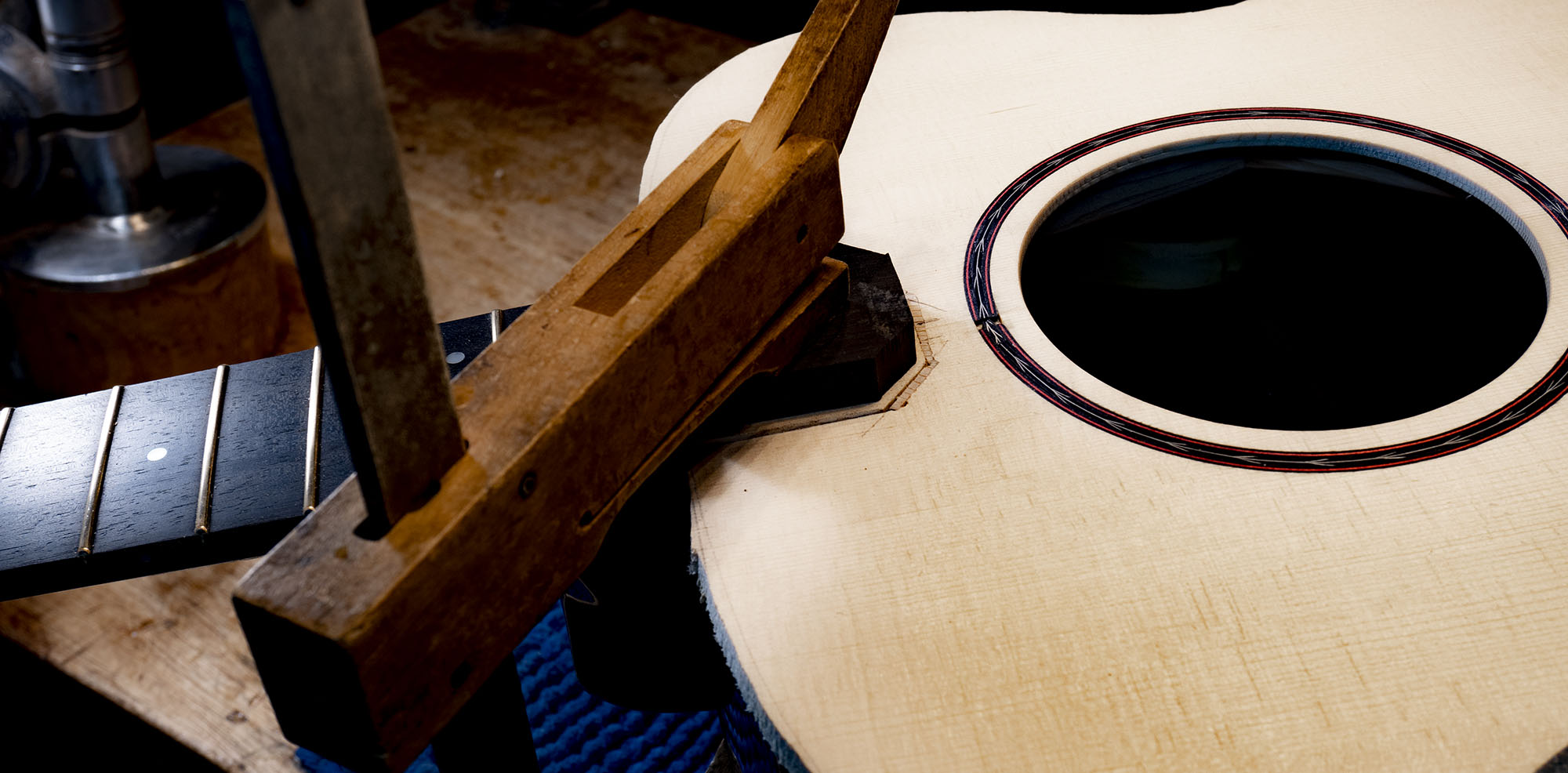 The neck extension has been locked firmly against the soundboard, and the space above it filled with another piece of spruce. It sits proud but will be leveled when the glue is dry; the neck and body are now rigidly connected and everything is ready for binding.
The neck extension has been locked firmly against the soundboard, and the space above it filled with another piece of spruce. It sits proud but will be leveled when the glue is dry; the neck and body are now rigidly connected and everything is ready for binding.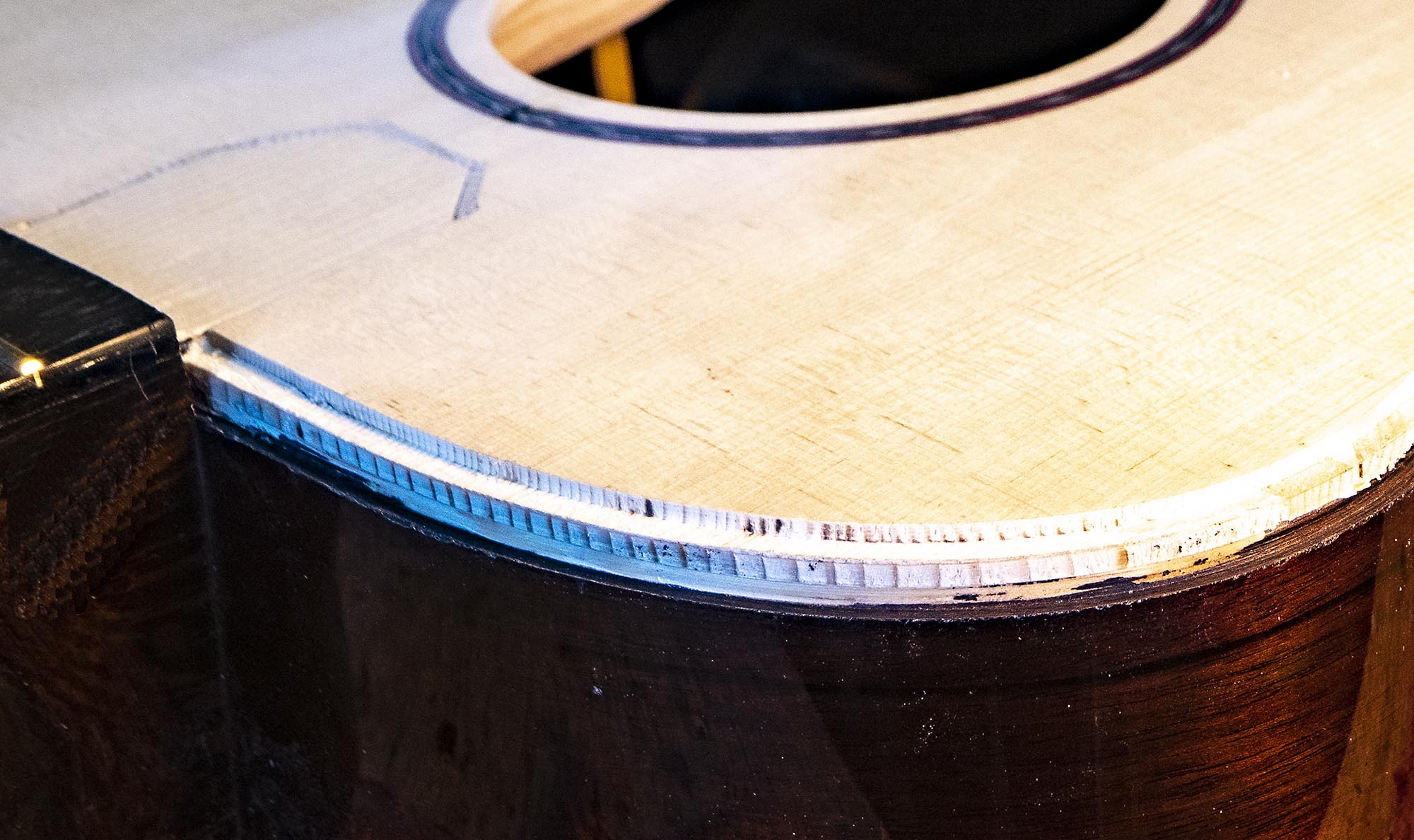 I rout the binding and trim ledges with the ledge routing jig; the neck made life difficult and didn’t allow the jig to rout right up to it. So the last inch or so both sides I cut by hand. The neck also complicated fitting the neck end of the binding, which has to be fed between the soundboard and end of the neck.
I rout the binding and trim ledges with the ledge routing jig; the neck made life difficult and didn’t allow the jig to rout right up to it. So the last inch or so both sides I cut by hand. The neck also complicated fitting the neck end of the binding, which has to be fed between the soundboard and end of the neck.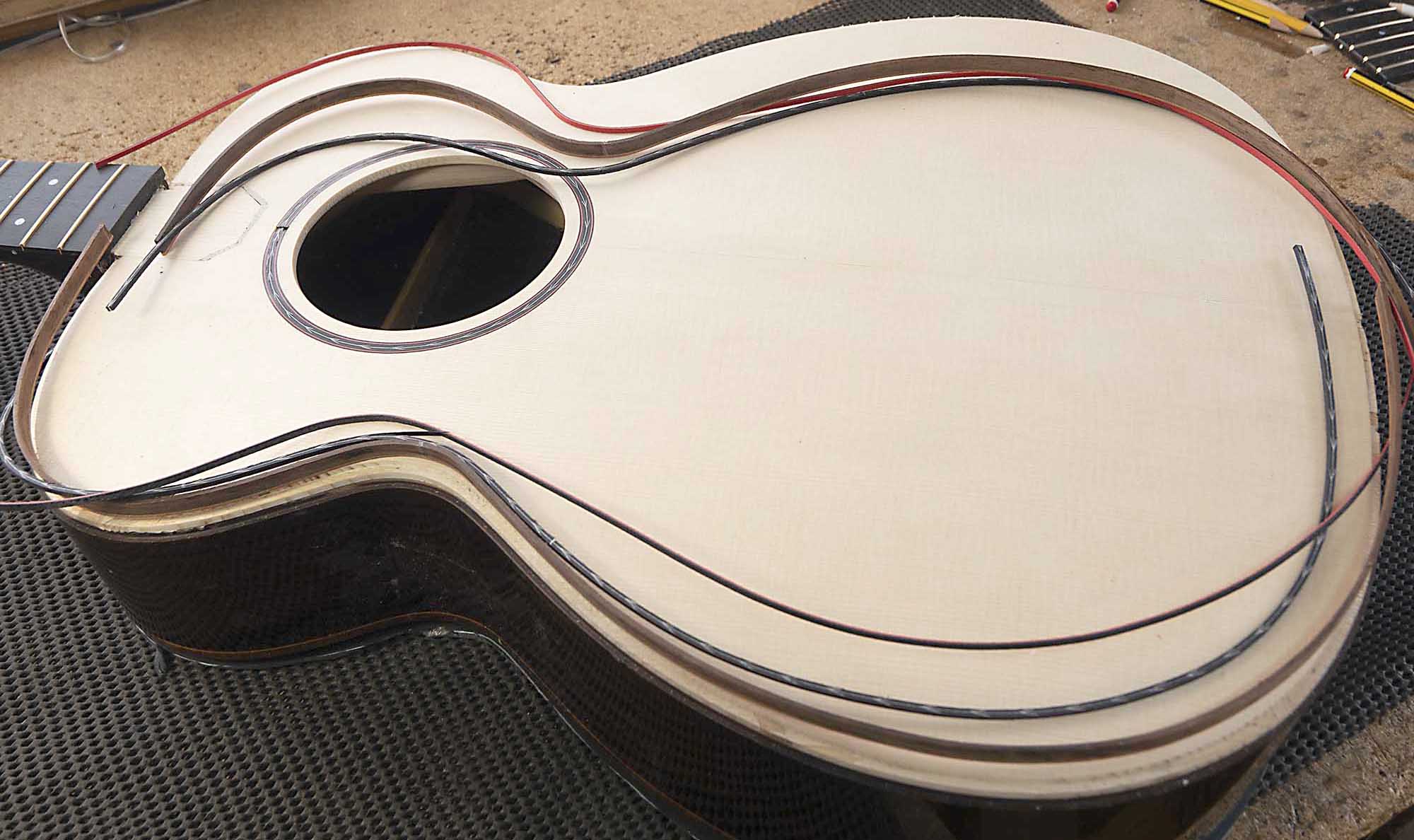 The ledges complete, the binding and two piece trim have been bent to shape on the bender. I’ve mitred the tail end of the bindings to join up with the back trim, and all have been cut to exact length. I was now ready to bind.
The ledges complete, the binding and two piece trim have been bent to shape on the bender. I’ve mitred the tail end of the bindings to join up with the back trim, and all have been cut to exact length. I was now ready to bind.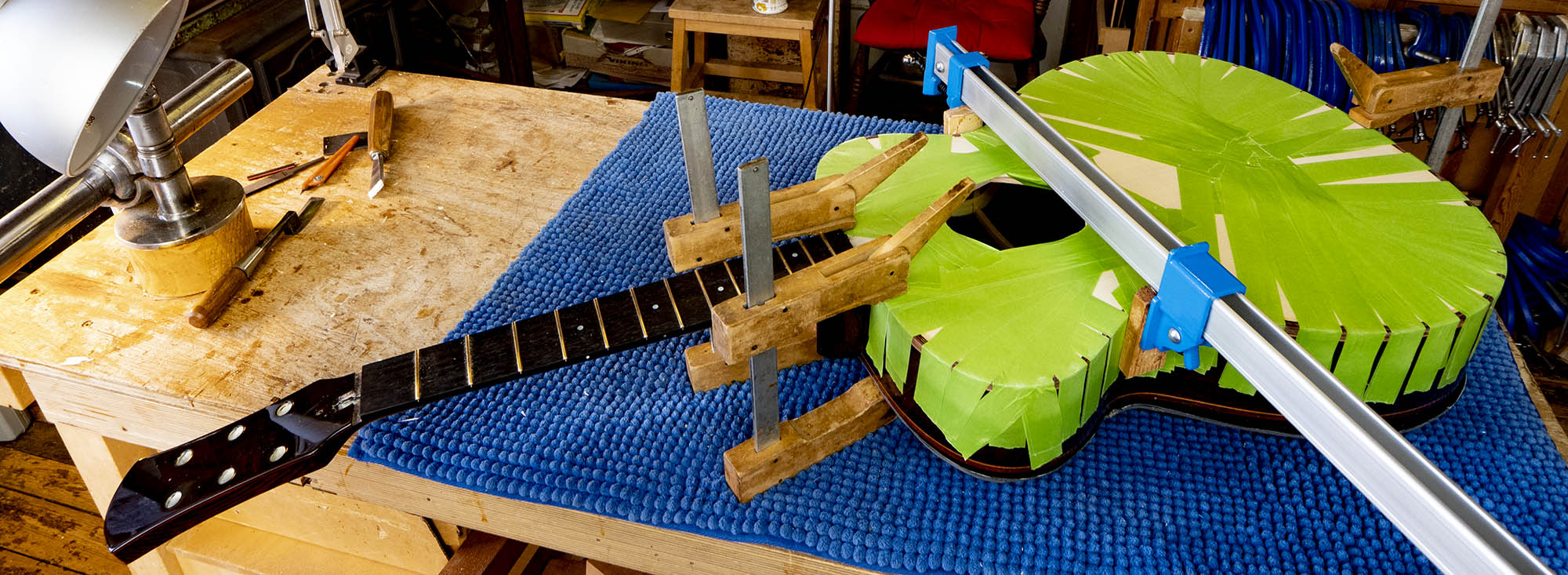 The bindings and trim are glued and firmly bound with garish tape. This could be the colour James Joyce described as ‘a scrotum tightening shade of green’.
The bindings and trim are glued and firmly bound with garish tape. This could be the colour James Joyce described as ‘a scrotum tightening shade of green’.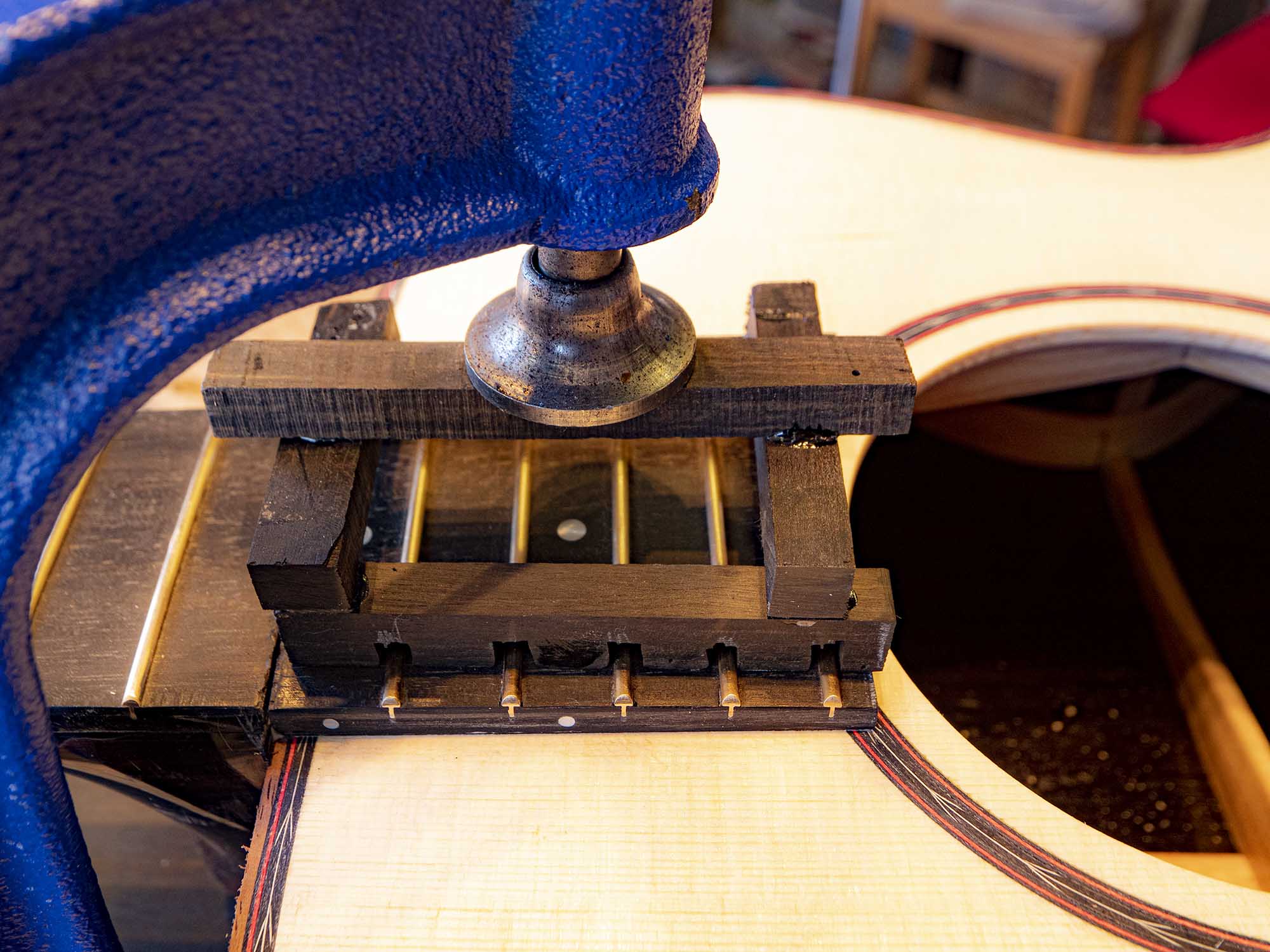
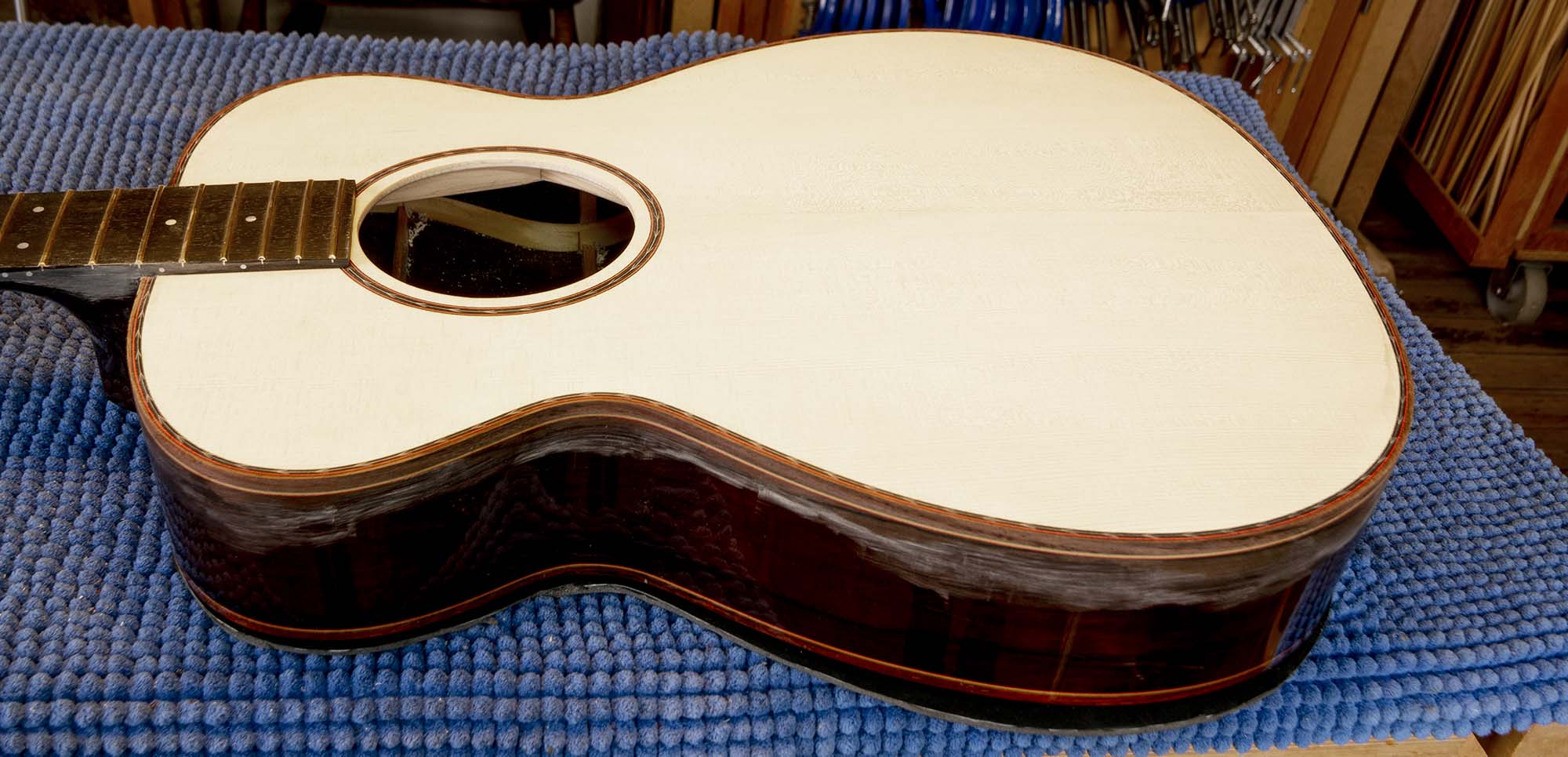
 Ebony bridge blank
Ebony bridge blank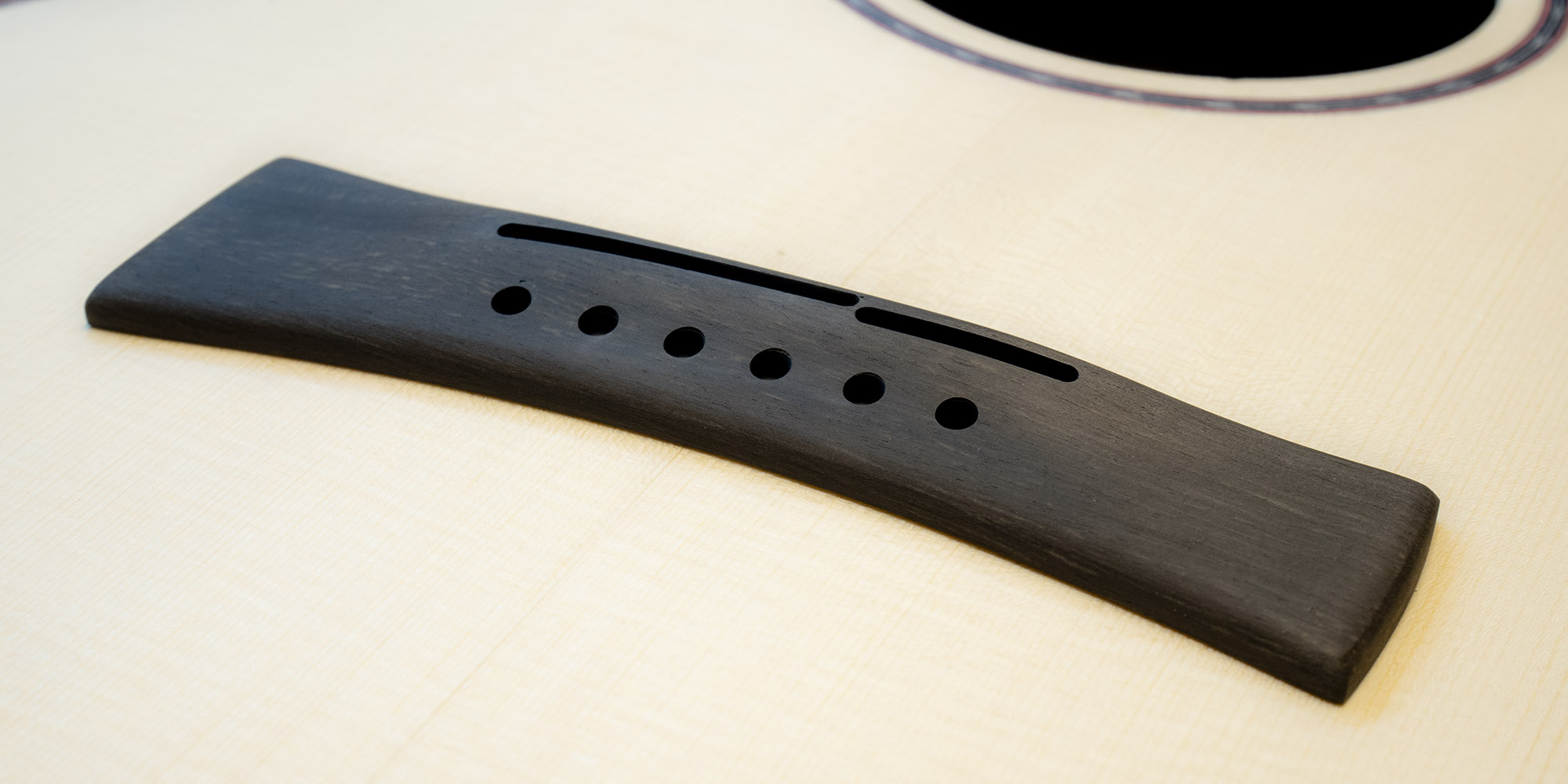 Bridge shaped and matched to soundboard curve, holes and saddle slots cut
Bridge shaped and matched to soundboard curve, holes and saddle slots cut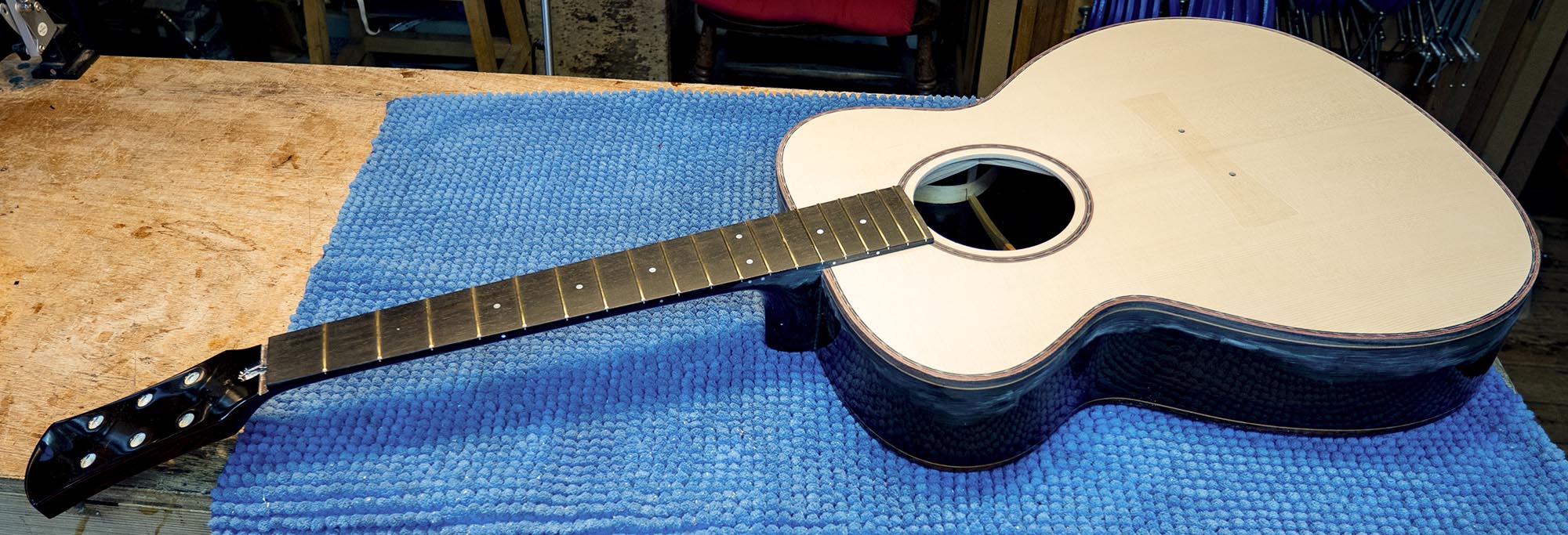 Looking perfect, now ready for Dave and the spraybooth. The taped off bridge area can just be seen, the tape will be removed after lacquering so the bridge glues onto bare wood.
Looking perfect, now ready for Dave and the spraybooth. The taped off bridge area can just be seen, the tape will be removed after lacquering so the bridge glues onto bare wood.